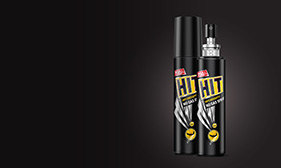Other
disclosures
A. Key financial ratios
| Standalone | Consolidated | ||||
|---|---|---|---|---|---|
| FY 23-24 | FY 22-23 | FY 23-24 | FY 22-23 | ||
| Debtors’ turnover ratio | 20.36 | 22.90 | 10.05 | 11.18 | |
| Inventory turnover ratio | 13.35 | 10.89 | 9.95 | 7.20 | |
| Interest coverage ratio | 6.77 | 529.25 | 0.10 | 12.02 | |
| Current ratio | 0.90 | 3.03 | 0.99 | 1.76 | |
| Debt equity ratio | 0.21 | - | 0.25 | 0.07 | |
| Operating profit margin (%) | 26.68% | 24.37 | 21.78 | 19.07 | |
| Net profit margin (%) | 7.83% | 20.10 | - 4.01 | 12.90 | |
| Return on net worth (%) | 6.83% | 17.56 | - 4.25 | 13.34 | |
Reasons for change in standalone ratios
- Change in the interest coverage ratio is due to increase in finance costs
- Change in the current ratio is due to increase in short term borrowings and decrease in investment
- Change in the debt-equity ratio is due to increase in short term borrowings.
Reasons for change in consolidated ratios
- Inventory turnover ratio has increased due to decrease in inventory (in absolute terms) by ~17% , with a corresponding increase in revenue by ~6%.
- Current ratio has fallen due to significant increase in short term borrowings , there by increasing overall current liabilities by ~70% . with a corresponding decrease in current assets by ~4%.
- Debt equity ratio has increased mainly due to significant increase in short term borrowings .
| Formulae used for calculation of the ratios | |
|---|---|
| Debt equity ratio (including financial liabilities) | ((Non-current + Current Borrowings)/Total Equity)s |
| Inventory turnover ratio | Net sales/average of opening and closing inventories |
| Interest coverage ratio | (PAT + finance cost + depreciation and amortization expense + (profit)/loss on the sale of fixed assets)/finance cost |
| Current ratio | Current assets/current liabilities |
| Debt equity ratio (including financial liabilities) | Non-current + current borrowings/total equity |
| Operating profit margin (%) | (Profit before depreciation, interest, tax, exceptional items and foreign exchange gain/loss less other income)/total revenue from operations |
| Net profit margin (%) | Profit after tax/net sales |
| Return on net worth (%) | Profit after tax/average equity |
B. Internal control systems and their adequacy
We have implemented an internal control framework to ensure that all assets are safeguarded and protected against loss from unauthorised use or disposition and that transactions are authorised, recorded, and reported correctly. The framework includes Internal Financial Controls over Financial Reporting, which provides reasonable assurance over the integrity of financial statements of the company and reduces the possibility of frauds. Our Corporate Audit and Assurance department issues well-documented operating procedures and authorities with adequate built-in controls keep track of any major changes both at the beginning of any activity as well as during the process.
As part of the audits, they also review the design of key processes from the point of view of adequacy of controls. Periodic reports—as part of continuous monitoring—are generated to identify exceptions through data analysis. The internal controls are tested for their design and operating effectiveness across all our locations and functions by the Corporate Audit team; control failures are reviewed by the management from time to time for corrective action.
Controls with respect to authorisation in underlying IT systems are also reviewed periodically to ensure that users have access to only those transactions that their roles require. Our head office in Mumbai, offices across India, and all major factories follow an Information Security Management System and are ISO/IEC 27001:2013 certified.


